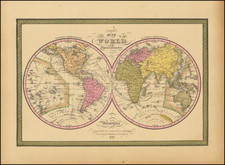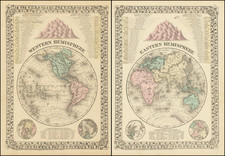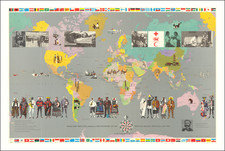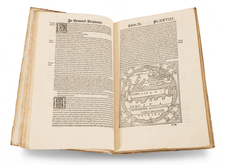Scientific View of Global Agriculture
This map is from the 1854 Physical Atlas of Natural Phenomena by Alexander Keith Johnston. The map is a detailed depiction of the agricultural output of the different continents of Earth, showing the range and variation in crops that grow globally. There is ample detail on the different types of botanicals grown, ranging from commercial lumber like mahogany to staples such as wheat to cash crops like tobacco and sugar. The depiction of different agricultural products illustrates the robust global trade that was developing during this time as both luxury and staple crops were disseminated across the world.
The map's most striking feature is the vivid hand coloring that decorates and explains the different classifications of agriculture. Each color represents a different family of crops and due to the large variation in human farming, the map becomes quite colorful. Additional color appears with the depiction of the global range for wheat and northern or tropical grains. This section nicely explains which areas are viable for certain agricultural production and further adds to the overall composition of the map.
Further information is shown within the five insets that make up the bottom of the chart. They contain additional regional information that would be of primary importance to a European audience. Western Europe is shown with a more informative map of food plants that adds some nuance to the region. The other two regions of the world are not given this treatment, rather they are featured in insets that illustrate the range of cash crops like spices, dyes, and tea. Overall an informative section that shows the priorities of the Western creators of this map.
To see additional information on this piece, see David Rumsey's Catalog Record for this map.









![[ World Atlas ] [ Composite Atlas of the World including important American maps and Whiston's Scheme of the Solar System ]](https://storage.googleapis.com/raremaps/img/small/100165.jpg)

![[Wall Map] Orbis Terrarum Nova et Accurata Tabula. Auct. G. Valck.](https://storage.googleapis.com/raremaps/img/small/41630dc.jpg)


